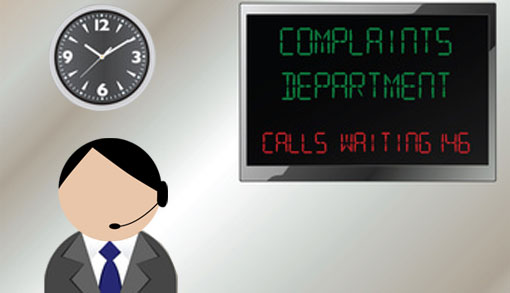Customers who plunge into purchases that result to unsatisfactory performance dread the moment when they have to notify the shop they patronized because more often than not, poor post-sales customer service handling is what is expected. Breakdown of an item do happen, albeit rarely. But if businesses learn how best to handle these rare post-sales customer issues well, threat can actually turn into opportunity for return businesses from the complainants themselves. Here’s a short sample of how that can happen.
Last winter, a blogger client decided to shell out $170 to have a fire grate made in his new home. After installation, the customer was satisfied with his purchase. Craftsmanship appeared impeccable, functionality and operations, smooth. But after only twenty fires, the whole device started to lose shape, bend in several places and eventually conked out. Generally, this would instantly be concluded as a bad purchase and will result to irritation and dissatisfaction. Coming from an active blogger, this can spell disaster and bad publicity for the shop and the product itself.
Fortunately, the client is a sensible man. He has professed he generally avoids conflicts at all costs. Placing the problem in the back-burner, so to speak, for a couple of weeks so as to delay the eventual confrontation of the problematic item, the client finally realized he should take it back. “Sorry, mate, our guarantee only extends to 14-days” or “Sorry but you shouldn’t have kept using it” were the standard parroted words expected. One cannot really blame him for expecting those.
Upon placing the complaint formally on the counter’s shop, lo and behold, he got the surprise of his life! How so? The fellow who received his concerns promptly apologized for the item delivered and immediately laid out a resolution plan complete with timelines. Instead of referring to the client as a “mate,” the shop fellow pleasantly referred to the client by his first name on his apology immediately striking a more personal, professional connection and at the same time, pacifying the irritation and offering a resolution that would be done within two days! The end result? The problematic fire grate was fixed on the same day at no extra charge.
Now that is what you call Impeccable Customer Service Handling.
“How you handle customer complaints can create an opportunity to promote your business.”
Clients acknowledge that although products are supposed to deliver what they promised in their unique selling propositions, problems do arise and mistakes do happen. From the business owner’s perspective, the learning here is how best to handle situations like these when they arise so as to ensure continued patronage and understanding from their business providers.
The blogger client who was pleasantly surprised of the experience did, as expected, blog about the whole thing. In his online article, he swore he could tell the fellow who handled his complaint resolution had no formal training in corporate customer service. However, what set this fellow apart from his peers is that he took ownership of the business, exercised wise judgment, and did what seemed right. In business-speak, this bright fellow listened to his customer’s request, offered a reasonable resolution, provided a sensible timeline and delivered.
Don’t get it wrong: good customer service handling does not mean giving in to every whim and fancy of complaining customers. Admittedly, there are moments when clients are simply unreasonable. But in every situation, there is a solution. The only message this article wishes to imbibe is that good customer service handling, especially post-sales, is another important selling experience a client must enjoy. Have a good ear for listening, be sensible and mature about your options and deliver promptly. The last of these elements is as essential as the first: delivery. After all, nobody likes to be delayed. Nobody likes to wait. Prompt action not only delivers but it also seals the deal.
How businesses handle customer complaints reflect how clients will look at them for similar future requirements. Handled well, these once irate customers can turn into loyal, happily raving patrons. Search for that blog of the fire grate blogger client – he has sworn he’d buy another fire grate soon at Flash Weld in Mornington, Victoria.










